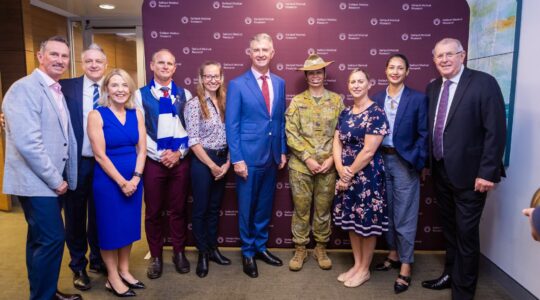By Susan Schwartz
Isolation, natural disasters, and a lack of support services has left Queensland women on the land struggling with their mental health, according to a new report.
The Rural, Regional, Remote Women (RRR Women) Report 2025 found a staggering 93 percent of women were concerned about mental health issues in their communities.
The lack of support networks were vital to this outlook, with only 53 percent feeling highly connected to their families, and only 18 percent highly connected to a professional network.
Access to mental health support was either poor, very poor, or average according to nearly 63 percent of the 500 Queensland women who were interviewed for the report.
RRR Women President Emma Clarke said the data told a powerful story.
“The findings show rural women face systemic barriers to essential services, impacting their financial independence and overall well-being,” Ms Clarke said.
“It’s the first time conditions for rural women have been benchmarked to measure indicators across regions, industries and demographics.
“This helps us to understand the impact of the urban-rural divide, access to services, mental health, natural disaster and drought, and connection and social inclusion.
“The voices of rural, regional, and remote women risk being overlooked in national conversations. This research is a powerful step in changing the narrative.”
RRR Women is an independent, not-for-profit membership organisation.
The findings were launched in a panel discussion at the 2025 Rural, Regional and Remote Women Conference in Rockhampton recently, with Queensland Country Women’s Association State President Tamara Stephensen, National Council of Women Queensland President Sandy Smith and Queensland Rural, Regional and Remote Women President Emma Clarke.
The report also found:
The digital divide and media consumption shift
- Social media (76 percent) is the primary news source, far surpassing traditional media like TV (54 percent) and newspapers (25 percent)
- Despite high social media use, access to digital resources and internet services is below average, demonstrating a gap between reliance on digital platforms and actual digital accessibility.
Unpaid and volunteer work: The hidden economy
- Close to a quarter (24 percent) engage in both paid and unpaid work, while another 26 percent work entirely unpaid.
- Volunteering is widespread: 36 percent contribute at least 10 hours per week.
- More than (half 50 percent) of women engage in some form of unpaid labor, either fully or alongside paid work.
Economic and service inequality
- Access to critical services (affordable energy, childcare, internet and telecommunications technology and health services) is poor.
- Banking and postal services have some of the worst accessibility scores.
Natural disasters: Ongoing recovery and resilience
- Supply chain (80 percent), power and communications disruptions (80 percent), live stock loss (81 percent), transport (85 percent) and road infrastructure damage (86 percent) were the most common impacts from flood, cyclone, fire and drought in the past five years.
- Nine percent experience disaster-related impacts lasting more than five years, affecting long-term stability.
Hope and future opportunities
- Despite challenges, respondents are hopeful about opportunities for their families and communities.
- Family and support networks are key sources of hope.
- While official support services are lacking, women rely heavily on family, friends, and informal networks for help.









